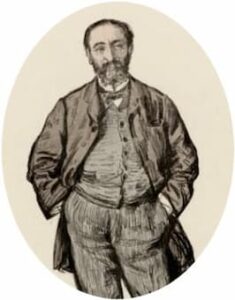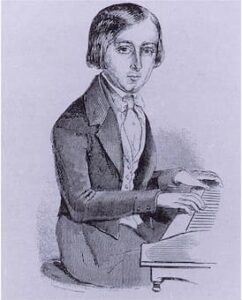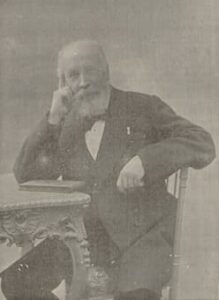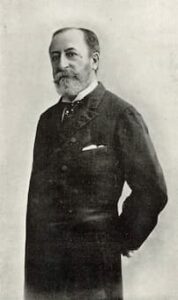It's all about the classical music composers and their works from the last 400 years and much more about music. Hier erfahren Sie alles über die klassischen Komponisten und ihre Meisterwerke der letzten vierhundert Jahre und vieles mehr über Klassische Musik.
Monday, January 29, 2024
Salut d'Amour (Edward Elgar) - Esther Abrami and Iyad Sughayer
Fil-Australians to lead 'Miss Saigon' in Manila cast
Abigail Adriano as Kim CONTRIBUTED PHOTOS/DANIEL BOUD ,Seann Miley Moore as the Engineer
Full casting has been announced today for The company is led by Filipino-Australians Abigail Adriano and Seann Miley Moore lead the cast of the upcoming the international tour of Cameron Mackintosh's new production of Boublil and Schönberg's "Miss Saigon," which will begin in Manila before traveling to other Asian territories.
Adriano plays Kim while Miley Moore as the Engineer. The 19-year-old Adriano made waves during the Australian run of the production and now joins the ranks of talented Filipinas like Lea Salonga, Monique Wilson, Joanna Ampil, Carla Guevara-Laforteza, and Eva Noblezada who have played the iconic role of Kim on Broadway and West End.
Leading the cast alongside Adriano and Miley Moore is Nigel Huckle as Chris, Sarah Morrison as Ellen, Lewis Francis as John, and Laurence Mossman as Thuy.
Local Filipina performer Kiara Dario also joins the company as Gigi. Dario was recently the lead in Repertory Philippines' "Snow White and the Prince," wherein she was nominated as Best Performer in a Musical for the BroadwayWorld Philippines Awards. Miss Saigon marks her first international tour.
Sharing his excitement for this cast, Cameron Mackintosh said, "This is a cast with incredible energy and heart who totally get the true story of Miss Saigon and its contemporary resonance. I have no doubt it'll be one of the most unforgettable productions of Miss Saigon we have ever seen."
GMG Productions' CEO Carlos Candal also commented, "We're incredibly excited to bring Miss Saigon to Manila and showcase the incredible talents of this diverse and remarkable ensemble. Filipinos will undoubtedly be treated to the exceptional artistry and performances this company of world-class performers can deliver."
"This show is Asian excellence and this cast is giving Slay-Asian pride!" Miley Moore said.
"Miss Saigon is a story that resonates with so many of us and our families so seeing all of us together, ready to tell this story, is really empowering. The spotlight is now on our community, and we are going to own the stage and tell our truth." Miley Moore has garnered rave reviews for their portrayal of the challenging role of the Engineer.
The Miss Saigon company of 42 performers is completed by Michael Boyle, Carlo Boumouglbay, Ellie Chan, Shannon Cheong, Celine Cleveland, David Duketis, Natasha Dumlao, Gelina Enriquez, Sara Haruta, Leyton Holmes, Jiho Hwang, Emily Huynh, Mikaila Imaguchi, Patrick Jeremy, Hamish Johnston, Nicholas Kong, Vi Lam, Winchester Lopez, Robbie Mejica, Bailey Nathan-Park, Tetsuya Okubo, Atsushi Okumura, David Ouch, Tony Oxybel, Paloma Renouf, Annabelle Rosewarne, Jack Connor Rowan, Trevor Santos, Louis Stockil, Asmara Soekotjo, Tamsyn Thomas, Brad Veitch, Aday Velasco, Louisa Vilinne, and Sam Ward.
Miss Saigon has music by Claude-Michel Schönberg with lyrics by Richard Maltby Jr. and Alain Boublil, adapted from original French lyrics by Alain Boublil, with additional lyrics by MichaelMahler.
The new production is directed by Laurence Connor with musical staging by Bob Avian and additional choreography by Geoffrey Garratt.
Don't miss the opportunity to witness Miss Saigon, landing at The Theatre at Solaire from March 23 to May 5. For updates, visit www.gmg-productions.com.
Thursday, January 25, 2024
Tuesday, January 23, 2024
Johann Strauss II - Rosen aus dem Süden, Op. 388 (Walzer)
I RISE TO THE TOP - Lani Misalucha w/ Filipino American Symphony Orchestra
Sunday, January 21, 2024
Martin Nievera - Ikaw (Lyric Video)
Tony Bennett, Lady Gaga - The Lady is a Tramp .
What are the best sounding musical songs of German modern music?

Try these ones:
Hannes Wader: Heute hier, morgen dort
Nena: Nur geträumt
Nina Hagen: Auf’m Friedhof
Herbert Grönemeyer: Bochum
Sarah Connor: Wie schön du bist
BAP: Verdamp lang her
Klaus Lage: Faust auf Faust
Achim Reichel: Aloha he
Namika: Lieblingsmensch
Xavier Naidoo: Dieser Weg
Udo Lindenberg: Mein Ding
Juli: Perfekte Welle
Udo Lindenberg: Honky Tonky Show
Klaus Lage: 1000 und 1 Nacht
Marius Müller-Westernhagen: Sexy
Nena: 99 Luftballons
Rammstein: Du hast
David Bowie: Helden
Saturday, January 20, 2024
Friday, January 19, 2024
Tony Bennett, Amy Winehouse - Body and Soul
19 January: Saint-Saëns’ Cello Concerto No. 1 Was Premiered
By Georg Predota, Interlude

Saint-Saëns, 1875
On 19 January 1873, the French cellist, viola da gamba player and instrument maker Auguste Tolbecque premiered Camille Saint-Saëns’ Cello Concerto No. 1 in A minor, Op. 33, a work specifically composed for him. Tolbecque was a close personal friend, and the solo cellist of the Conservatoire orchestra. He was a composer himself, and also a published music historian. Tolbecque was influential in the performance of early music as he conducted research into historical instruments and their restoration.

Saint-Saëns as a boy, 1846
His compositions tend to be light in style and influenced by Mendelssohn and Schumann. Tolbecque retired before he was able to produce a recording, and he does not figure prominently in the review of the Saint-Saëns concerto published in the Revue et gazette musicale de Paris immediately after the premiere. “If Mr. Saint-Saëns should decide to continue in this vein,” the reviewer wrote, “which is consistent with his violin concerto, the Trio in F, and other works of lesser significance, he is certain to recover many of the votes that he lost with his all-too-obvious divergence from classicism and the tendencies in a number of his recent works. We must say that the Cello Concerto seems to us to be a beautiful and good work of excellent sentiment and perfect cohesiveness, and as usual the form is of greatest interest.”

Auguste Tolbecque
At the time Saint-Saëns composed his first Cello Concerto he had already reached the age of thirty-seven. He was highly regarded in French musical circles, but as a composer he was still searching for his breakthrough work. He clearly possessed a mastery of compositional technique, and his ease, ingenuity, naturalness and productivity was compared to “a tree producing leaves.” Although he was living in a period of extreme musical experimentations, Saint-Saëns remained stubbornly traditional. Romain Rolland wrote in 1908, “He brings into the midst of our modern restlessness something of the sweetness and clarity of past periods, something that seems like fragments of a vanished world.” In his first Cello Concert, Saint-Saëns takes a deliberate stance away from what the critic calls “the (modernist) tendencies in a number of his recent works.” His unmistakable melodic charm and characteristic freshness and vitality are clothed in a formal clarity that undoubtedly accounts for the widespread popularity the 1st Cello Concerto enjoyed from the very onset.

Opening of Saint-Saëns’ Cello Concerto No. 1
For Saint-Saëns, “form was the essence of art.” As he once wrote, “the music-lover is most of all enchanted by expressiveness and passion, but that is not the case for the artist. An artist who does not feel a deep sense of personal satisfaction with elegant lines, harmonious colors or a perfect progression of chords has no comprehension of true art.” As the anonymous critic had written after the premiere, “it should be clarified that this is in reality a “Concertstück,” since the three relatively short movements run together. The orchestra plays such a major role that it gives the work symphonic character, a tendency present in every concerto of any significance since Beethoven.” Saint-Saëns might have been looking at Franz Liszt, a composer he greatly admired, as the three movements of the concerto are interconnected. In fact, the principle theme is sounded in legato running triplets, and it appears in all movements of the concerto.

Saint-Saëns, circa 1880
Sir Donald Francis Tovey later wrote “Here, for once, is a violoncello concerto in which the solo instrument displays every register without the slightest difficulty in penetrating the orchestra.” The orchestra clearly plays a role beyond that of mere accompaniment, “as this work never succumbs to the imbalance frequently encountered in cello concertos whereby for long stretches the soloist is seen bowing furiously but is scarcely heard.” As Saint-Saëns tellingly suggested, “Virtuosity gives a composer wings with which to soar above the commonplace and the platitudinous.” Uniting the lyrical quality of the cello with instrumental virtuosity and carful orchestral scoring produced a work valued by performers and loved by audiences. But what is more, a good many composers, including Shostakovich and Rachmaninoff considered Saint-Saëns’ Cello Concerto No. 1 to be the greatest of all cello concertos.

.webp)